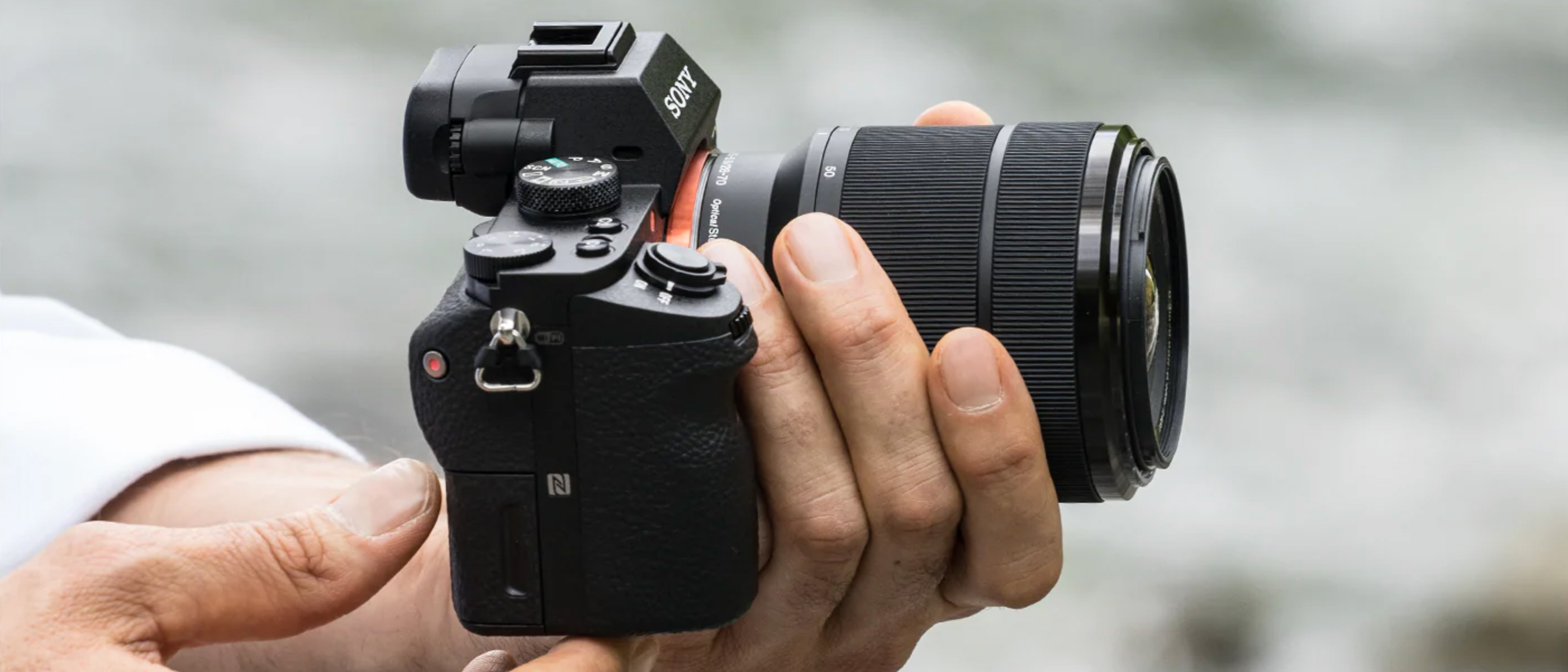Digital Camera World Verdict
As well as having a high-quality feel, a durable build and generally excellent control layout out (apart from the irritating video record button), the Alpha 7 II produces superb-quality images. And while its autofocus system isn’t up to the standard demanded by professional sports photographers, it’s fast and accurate in decent lighting conditions. The in-camera stabilisation system is also useful, enabling sharp images to be taken at shutter speeds that would not normally be possible when hand-holding a camera. It all adds up to make the Sony Alpha 7 II an extremely attractive camera at current prices.
Pros
- +
Full frame sensor
- +
In-body stabilization
- +
Value for money
Cons
- -
24 megapixels adequate but no more
- -
Full HD video, no 4K
- -
Modest 5fps continuous shooting
Why you can trust Digital Camera World
The Sony A7 II has been superseded by the newer Sony A7 III, but Sony's policy of keeping older models on sale means you can now get it at seriously low prices. This full frame mirrorless camera might not have Sony's very latest tech, but it's still versatile, competent and powerful – and amazing value for money.
You wouldn't necessarily say this was one of the best Sony cameras today, given the technical advances that have happened since then, but it's ideal for anyone shopping around for the cheapest full frame cameras right now.
• Update: The Sony A7 II is several years old now, but it's far from sliding into obsolescence. In fact, it's taking on a new relevance as it replaces the original Sony A7 as Sony's cheapest 'old' full frame camera. It's a lot better than the original A7 too, not least because it has in-body stabilization. The crazy thing is that it's now cheaper than most of Sony's APS-C mirrorless models, yet with a bigger sensor and IBIS! If you can do without 4K video, the Sony A7 II is a huge bargain today – though be aware that although it has phase-detect AF, its a couple of steps behind the latest models for both speed and sophistication.
Sony caused a major stir when it introduced the 24MP Alpha 7 and 36MP Alpha 7R – the first compact system cameras to have full-frame sensors. This is something that has still yet to be done by any other manufacturer.
Sony created new waves of excitement by introducing an update to the A7, in the guise of the A7 II. However, some may feel that changes are rather small as, like the vast majority of the new camera’s components, the sensor is the same 24MP Exmor CMOS device used in the original A7. It does have in-body stabilization, however, which makes it more appealing today as a bargain buy, even if it does cost a little more than the older version.
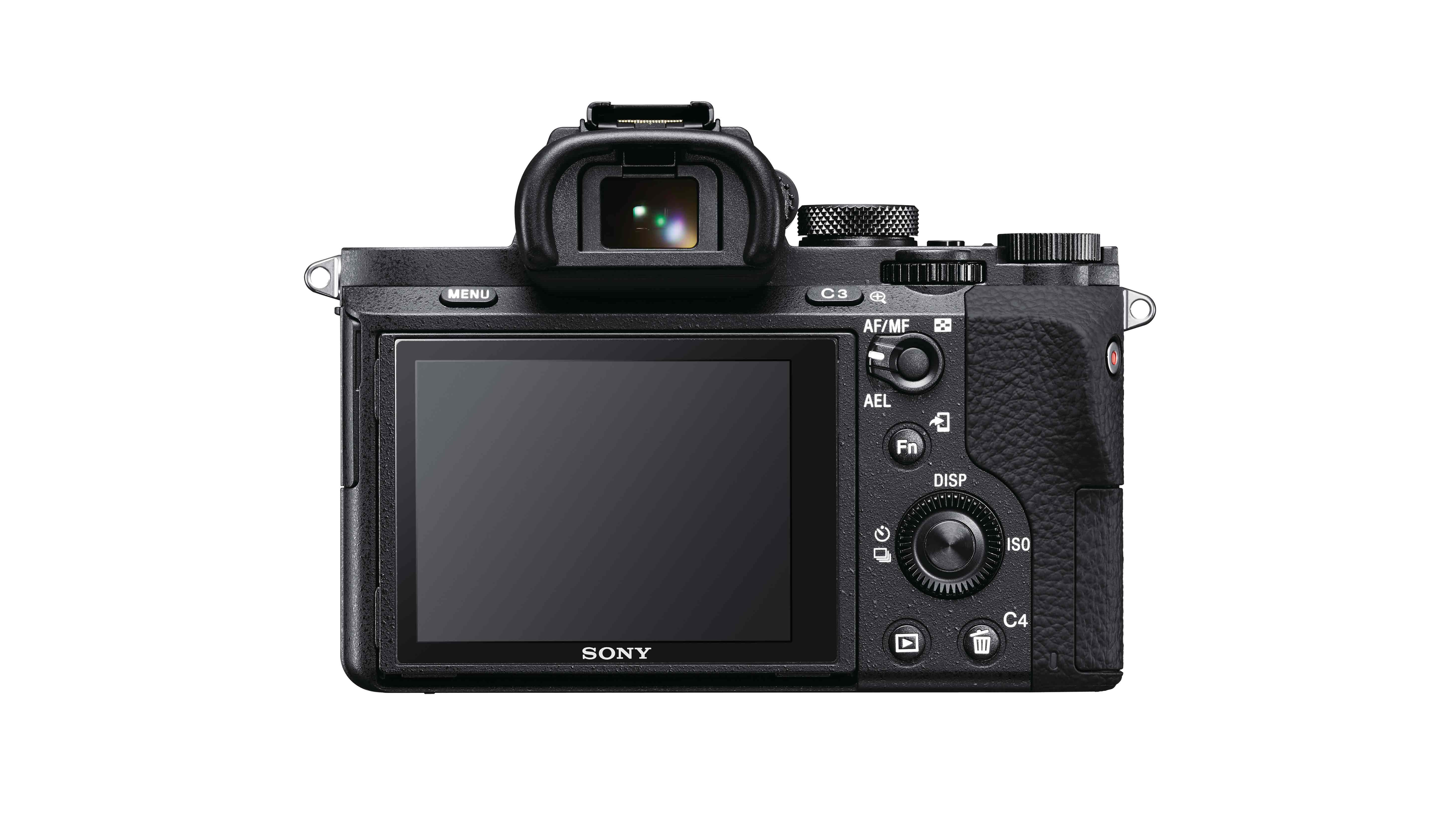
Specifications
Sony model number: ILCE-7M2
Sensor: 24.3 million effective pixel full-frame (35.2 x 23.9mm) Exmor CMOS
Focal length conversion: 1.0x
Memory: SD / SDHC / SDXC / Memory Stick
Viewfinder: 0.5-inch, 2.4-million-dot electronic viewfinder
Max Video Resolution: Full HD (1,920 x 1,080) at 60fps
ISO range: 50–25,600
Autofocus points: 117 phase detection; 25 contrast detection
Max Burst Rate: 5 frames per second
Screen: 3-inch, 1,228,800-dot tilting LCD
Shutter speeds: 30–1/8,000 sec plus Bulb
Weight: 556g (body only)
Dimensions: 127 x 96 x 60mm
Power supply: NP-FW50 rechargeable lithium-ion battery (supplied)
Key features
The biggest news about the A7 II was that is was the first full-frame digital camera to feature in-body stabilisation. This means that the sensor can move to correct for accidental camera movements in five directions during the exposure. When a stabilised Sony lens is used, the stabilisation effect is optimised, but not cumulative: either one or the other system is used.
Although the A7 II has the same hybrid AF system as the original A7, still on sale, Sony claims that new focusing algorithms enable a 30% increase in AF speed, with faster and longer high-speed drive and a 1.5x improvement in AF Tracking performance. There’s also the the addition of Lock-on AF (Wide/Zone/Centre/Flexible Spot) to help follow moving subjects.
Sony has also given the A7 II some of the video features of the A7S. For example, it can now record in XAVC S, AVCHD or MP4 formats. Picture Profiles offer the ability to set the gamma to Sony’s S-Log2 for reduced contrast and greater dynamic range, while the Time Code feature helps with scene identification and footage syncing from multiple cameras.
Other specification highlights of the A7 II include a sensitivity range of ISO 50–25,600; a 0.5-inch, 2.4-million-dot electronic viewfinder (EVF); a tiltable 3-inch RGBW 1,228,800-dot LCD screen; a battery life of 350 shots; built-in Wi-Fi connectivity; Near Field Communication (NFC) technology; a maximum continuous shooting rate of 5fps; and a standard-shape hotshoe with extra contacts to connect accessories like the microphone adaptor.
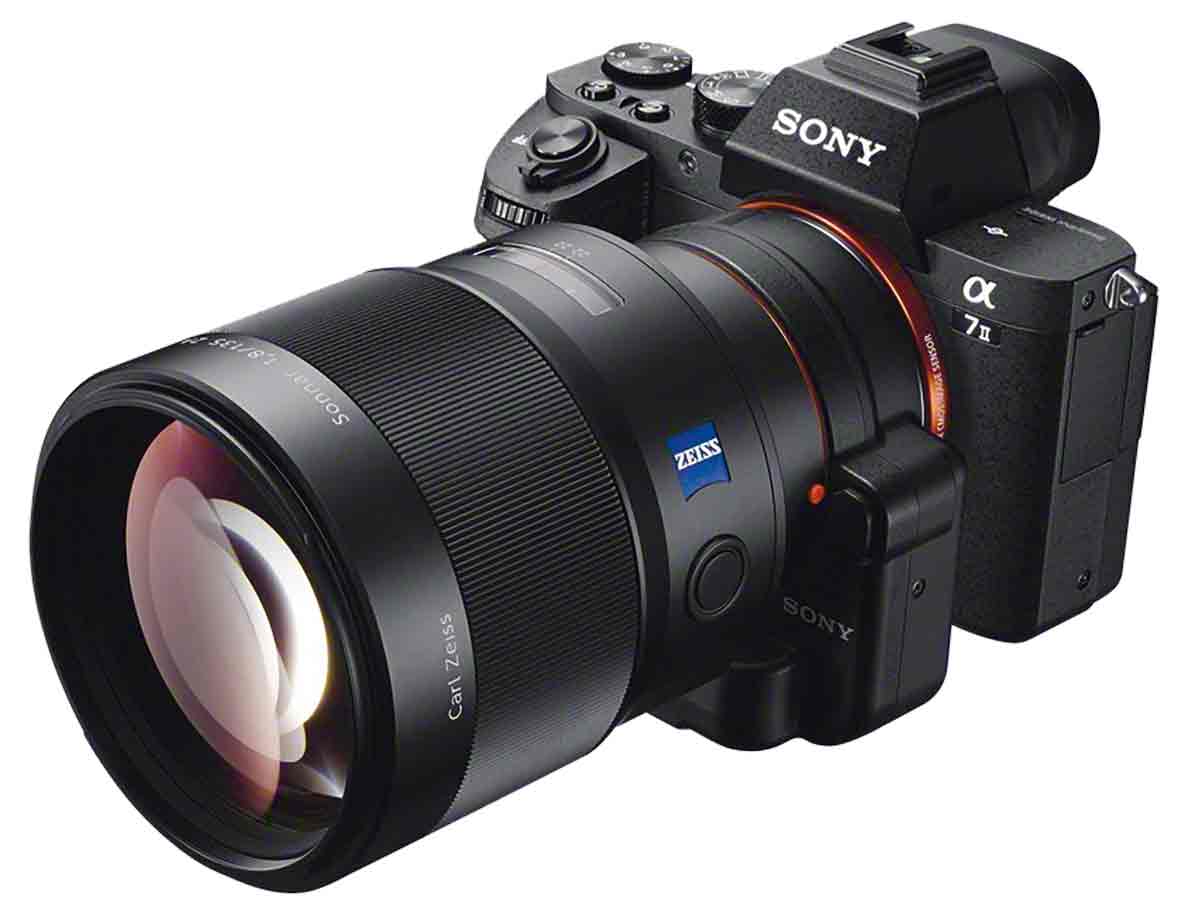
Build and handling
Like the other cameras in the Alpha 7 series, the A7 II has a rather angular, but attractive old-school appearance. According to Sony, the sensor housing has been made stronger in the A7 II, with more magnesium alloy than in the original camera. This, combined with the camera’s moisture and dust sealing, makes it durable.
One surprise when you use the Alpha 7 II for the first time is how loud the shutter is. You could be forgiven for thinking that it’s an SLR with a mirror slapping out of the way before the shutter opens.
The A7 II has a nice, deep grip, with a textured coating that gives excellent purchase. On the back of the camera there’s a small but effective thumb-ridge, which has the same coating as the front grip. These elements make the camera feel comfortable and secure in your hand.
Many of the buttons on the A7 II are customisable, so it’s worth spending some time using the camera and experimenting with different customisation settings. It’s also possible to customise the Function menu, accessed by pressing the Fn button on the back of the camera. Each of the menu’s 12 slots can be customised to access any of 32 features. The default settings are good, but it’s a good idea to keep an eye on which features you use.
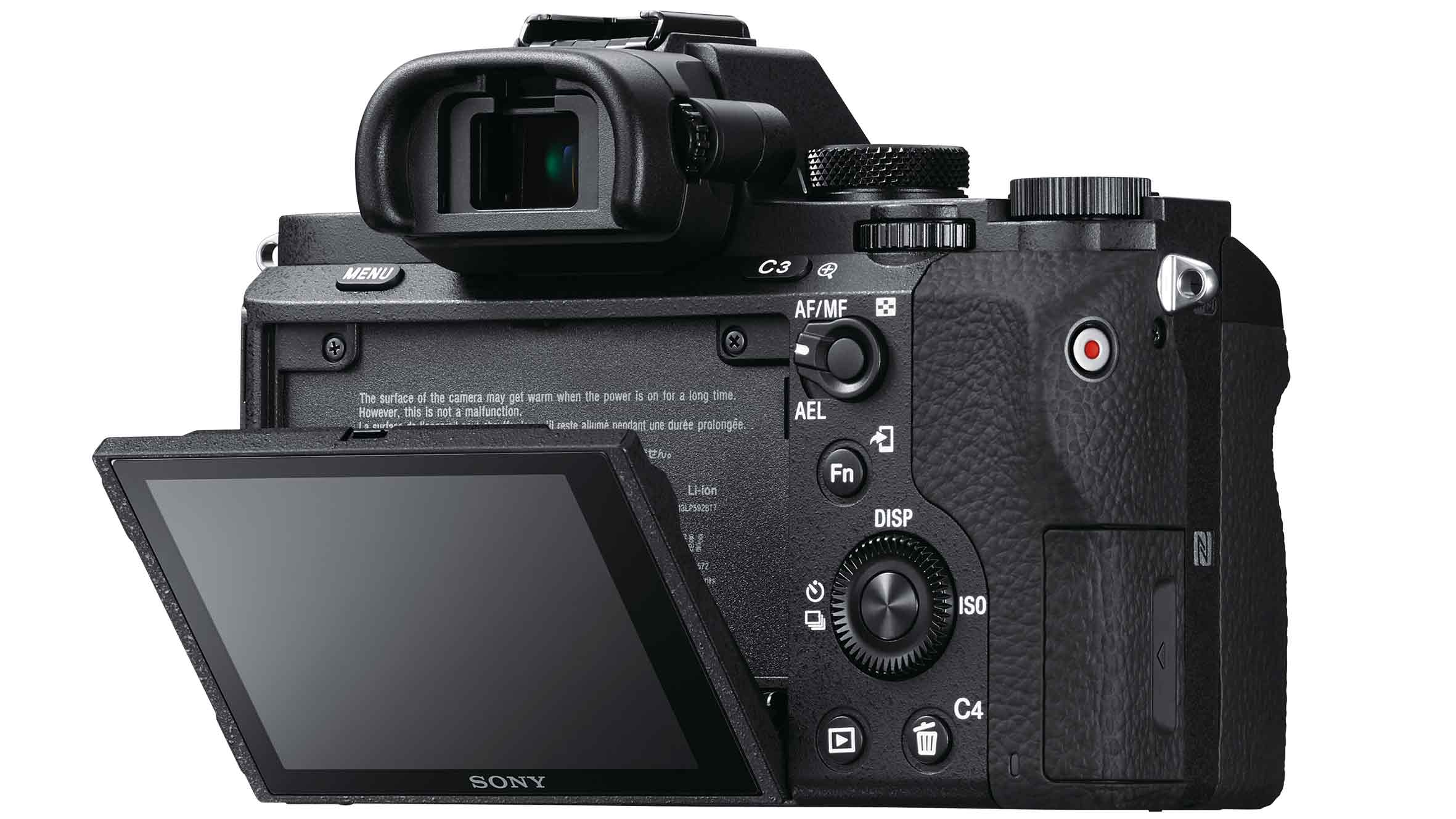
While the A7 II’s tilting screen is useful when shooting low-level landscape-orientation images, like most screens it suffers a little from reflections and glare in very bright conditions. And of course, a tilting screen is of little use when shooting upright format images.
Fortunately, like the other A7-series cameras, the A7 II has an excellent electronic viewfinder. This provides a nice clear view of the scene, with plenty of detail. The image in the EVF is natural, with just a shimmer here and there to remind you that it’s an electronic device rather than an optical one. However, colours are a little less saturated in the EVF than they are on the screen, in captured images and in real life.
On the whole, the A7 II’s controls are sensibly arranged, but the video record button is on the side of the thumb-ridge. It’s not a major issue to press this button if the camera is tripod mounted, or perhaps on a rig, but if you’re hand-holding it you need to adjust your grip significantly to press it. Another gripe is that the exposure compensation dial sometimes gets knocked out of place.
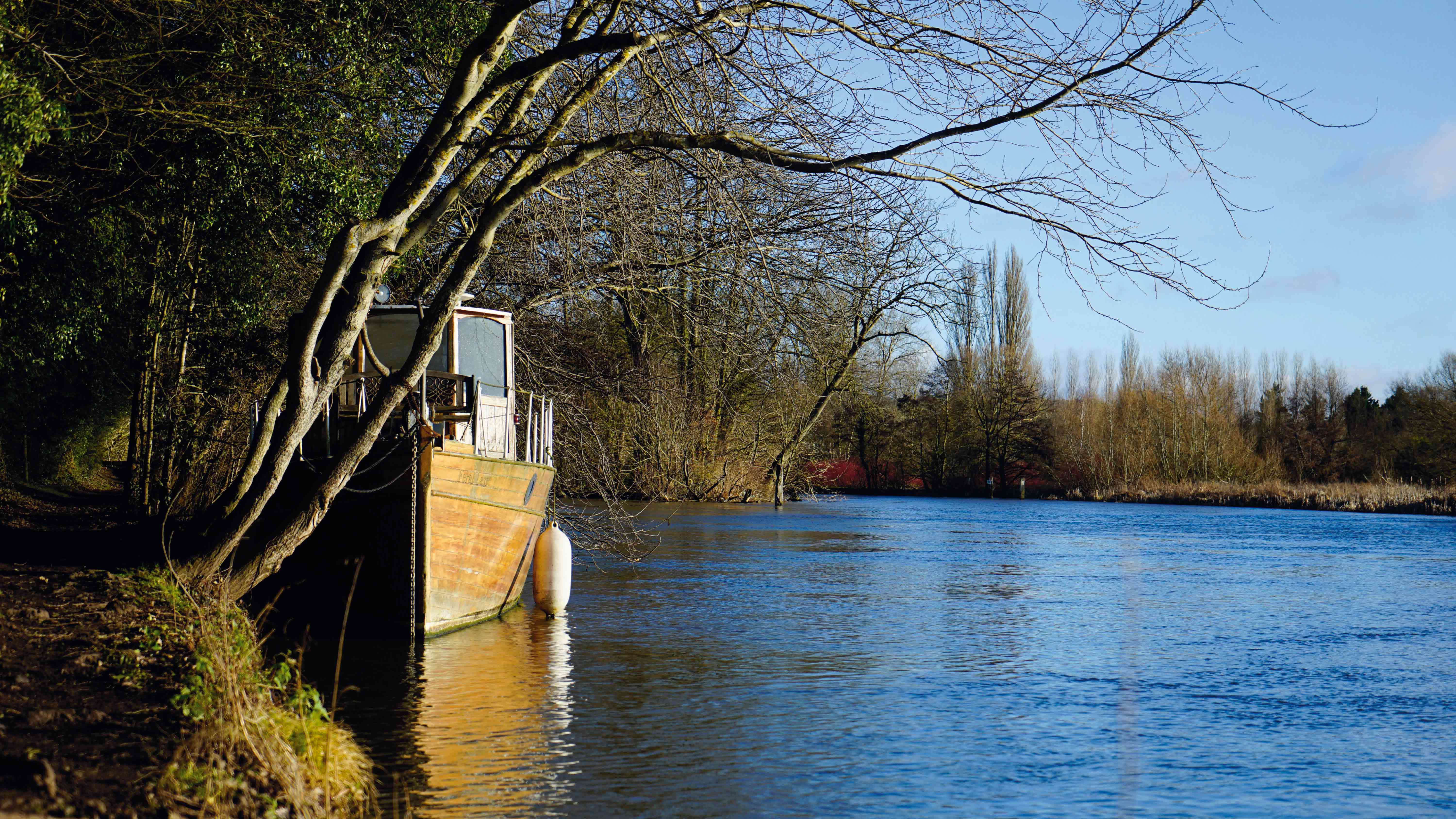
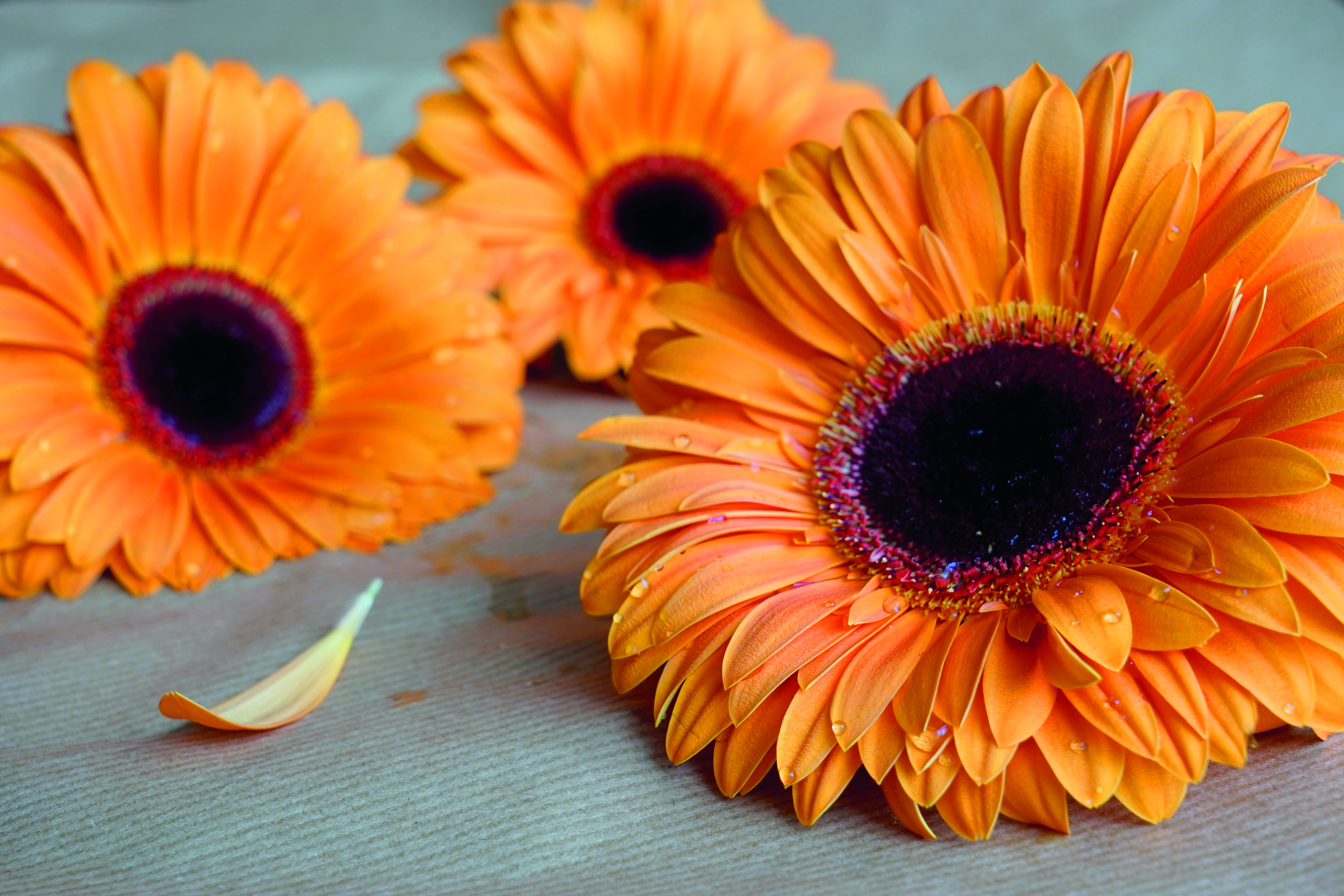
Performance
Our lab tests indicate that the A7 II is capable of resolving as much detail as the 28MP Samsung NX1 in lab conditions. Noise is also controlled well through the lower, middle and moderately high sensitivity settings. By ISO 6,400, there’s quite a bit of chroma noise visible in raw files viewed at 100% (when noise reduction is turned off).
The in-camera noise reduction applied to simultaneously captured JPEG files conceals this coloured speckling well, without too much loss of detail. The luminance noise remaining after the process is fine-grained and evenly distributed.
Step-up to ISO 12,800 and 25,600, however, and the noise reduction applied to JPEGs starts to take its toll, with more noticeable loss of detail and smoothing at 100%. Simultaneously captured raw files offer the opportunity to fine-tune noise reduction to find an acceptable mid-ground, with some noise visible along with greater detail. For the most part, though, we recommend avoiding the top sensitivity setting if you want to make prints or view images at A4 size or larger.
Naturally, we were keen to investigate the performance of the A7 II’s in-body image stabilisation system. When using the camera with the Carl Zeiss Vario-Tessar FE 24-70mm f/4 ZA OSS lens, which is itself stabilised, we could get acceptably sharp results at 70mm using a shutter speed of 1/6 sec. While this stabilisation doesn’t quite meet the 4.5EV maximum claimed by Sony, it is very good.
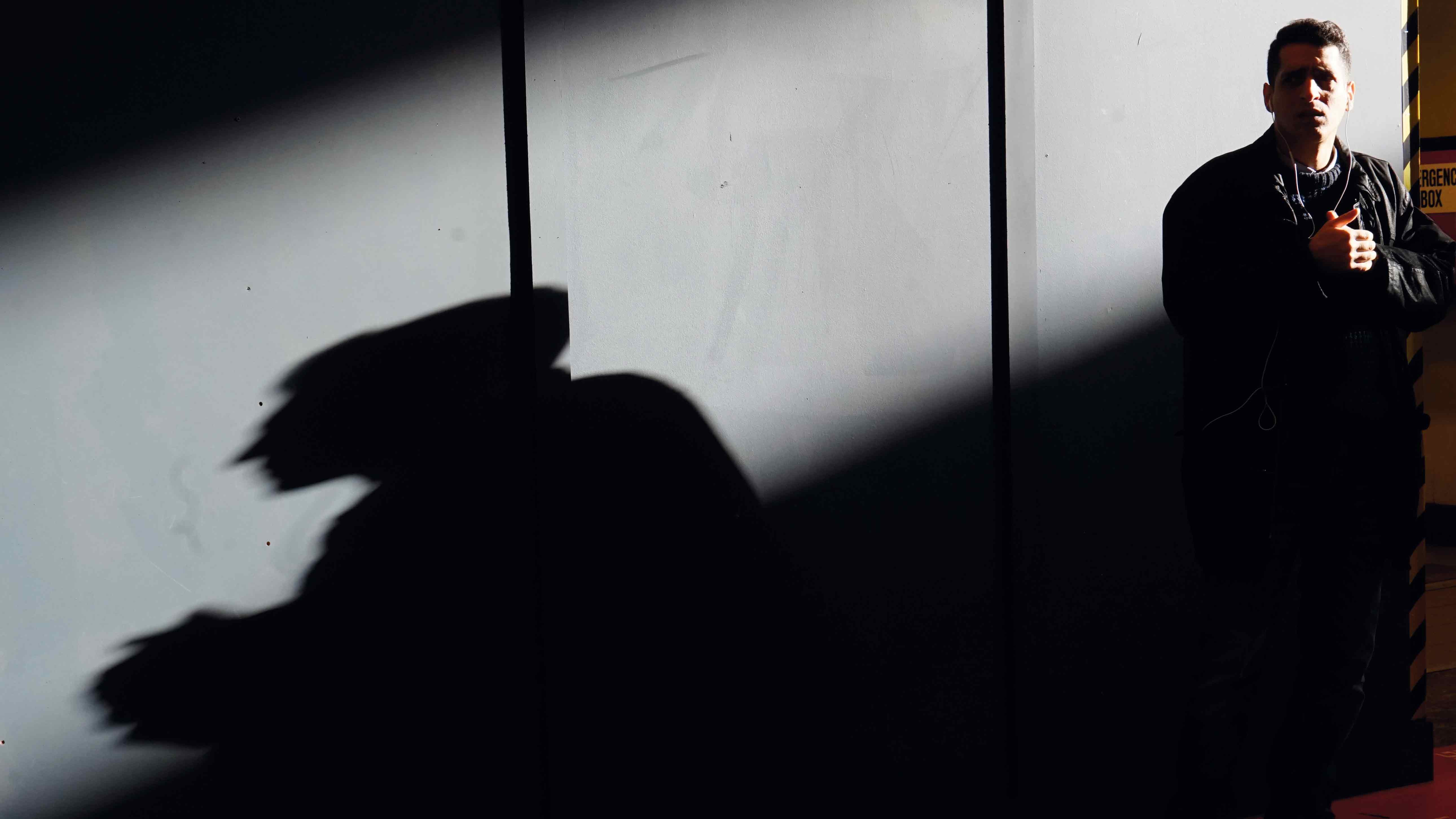
In normal outdoor daylight conditions, the A7 II’s autofocus system is very good. Fast and accurate in most situations, it even copes well with moving subjects and can keep up with them as they move away from or towards the camera. The Lock-on AF modes are particularly good for this type of situation. That said, professional or enthusiast sports photographers may be better off with cameras like the Canon 7D Mark II or the Nikon D750, which give greater control over how a subject is tracked and better low-light performance.
For the most part, the A7 II produces pleasant colours in its default Standard Creative Style mode. It’s a good all-round option, but the Landscape setting tends to produce more attractive landscape images with greater saturation, a little more warmth and slightly higher contrast.
The automatic white balance system is also a good performer, and can be relied upon in a wide range of lighting conditions. As usual, it struggles a bit under some artificial lighting, but it’s easy to set a Custom white balance value.
When we were shooting outside in bright winter sunshine and using the A7 II’s 1200-zone evaluative metering system, we found that many of our images benefitted from dialling in a little negative exposure compensation. The benefit of an electronic viewfinder is that you can see the impact of any exposure adjustments before taking the shot, so the need for exposure compensation isn’t a major drama.
We haven’t fully tested the video capability of the A7 II, but our initial assessment is that it produces high-quality footage, which generally looks natural.
Lab tests
We've compared the Sony A7 Mark II's lab results with those of three of its modern-day rivals, to see if this older camera model is still worth buying today. We've tested it against the Canon EOS RP, Nikon Z 6 and Panasonic Lumix S1.
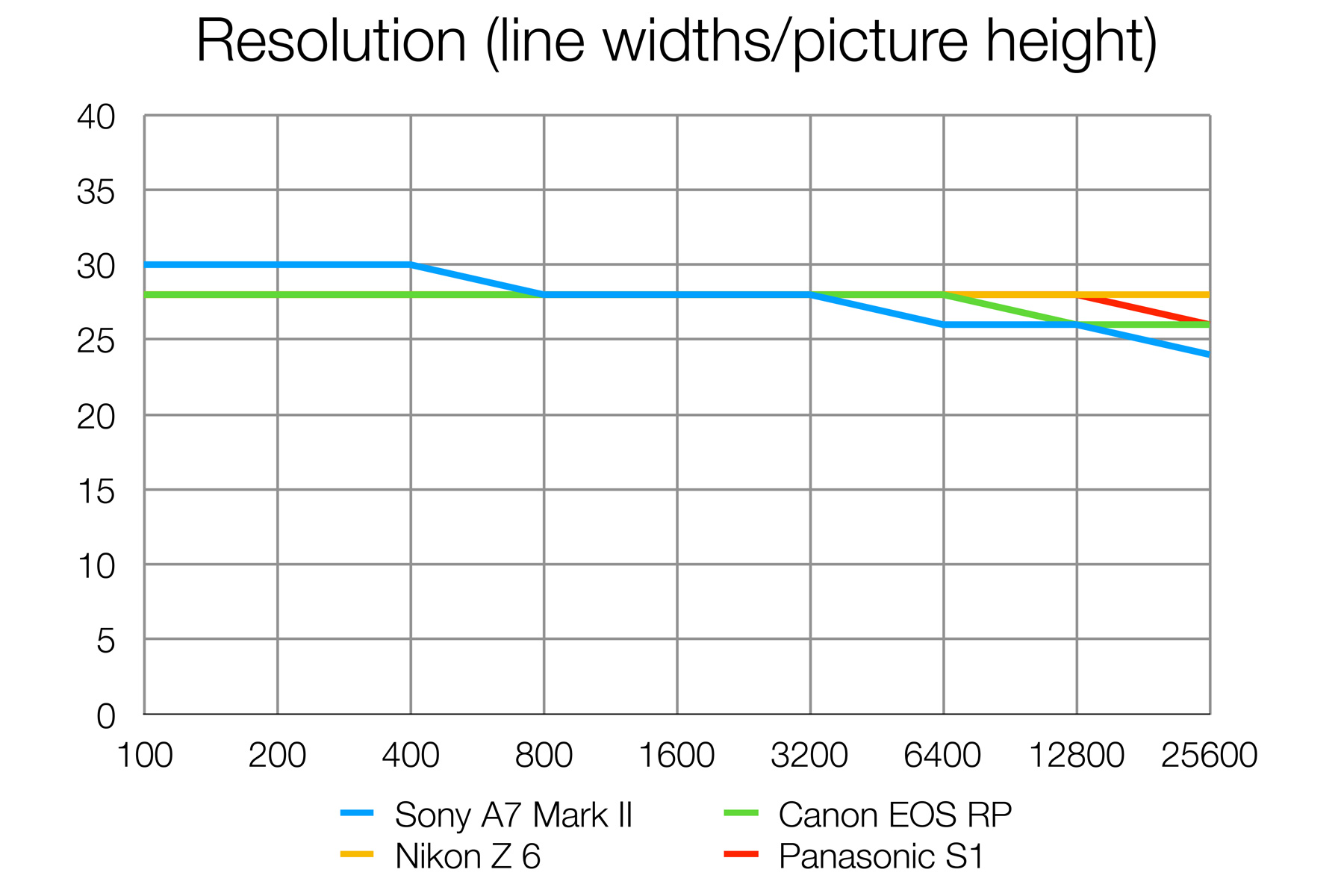
Resolution
All four of these cameras deliver remarkably similar resolution figures. The older Sony A7 II has a very slight advantage over the rest up to ISO 400, but after that these cameras are largely inseparable. The resolution of the Sony sensor does drop away very slightly more than the others at ISO 3200 and beyond, but the differences are small.
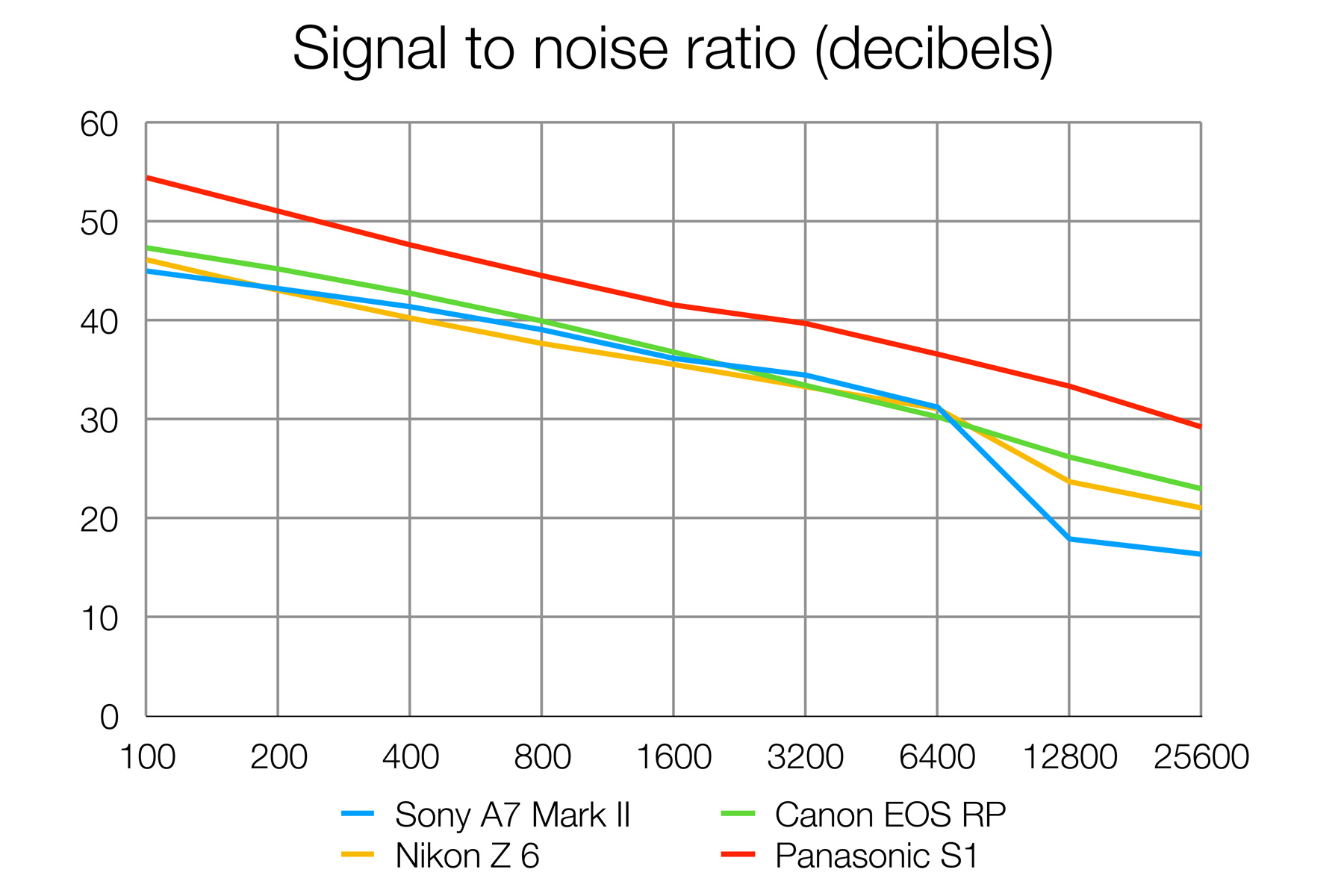
Signal to noise ratio
Despite having a much older sensor, the Sony A7 II matches the newer Nikon Z 6 and Canon EOS RP for noise levels – though the Panasonic Lumix S1 is way off on its own here.
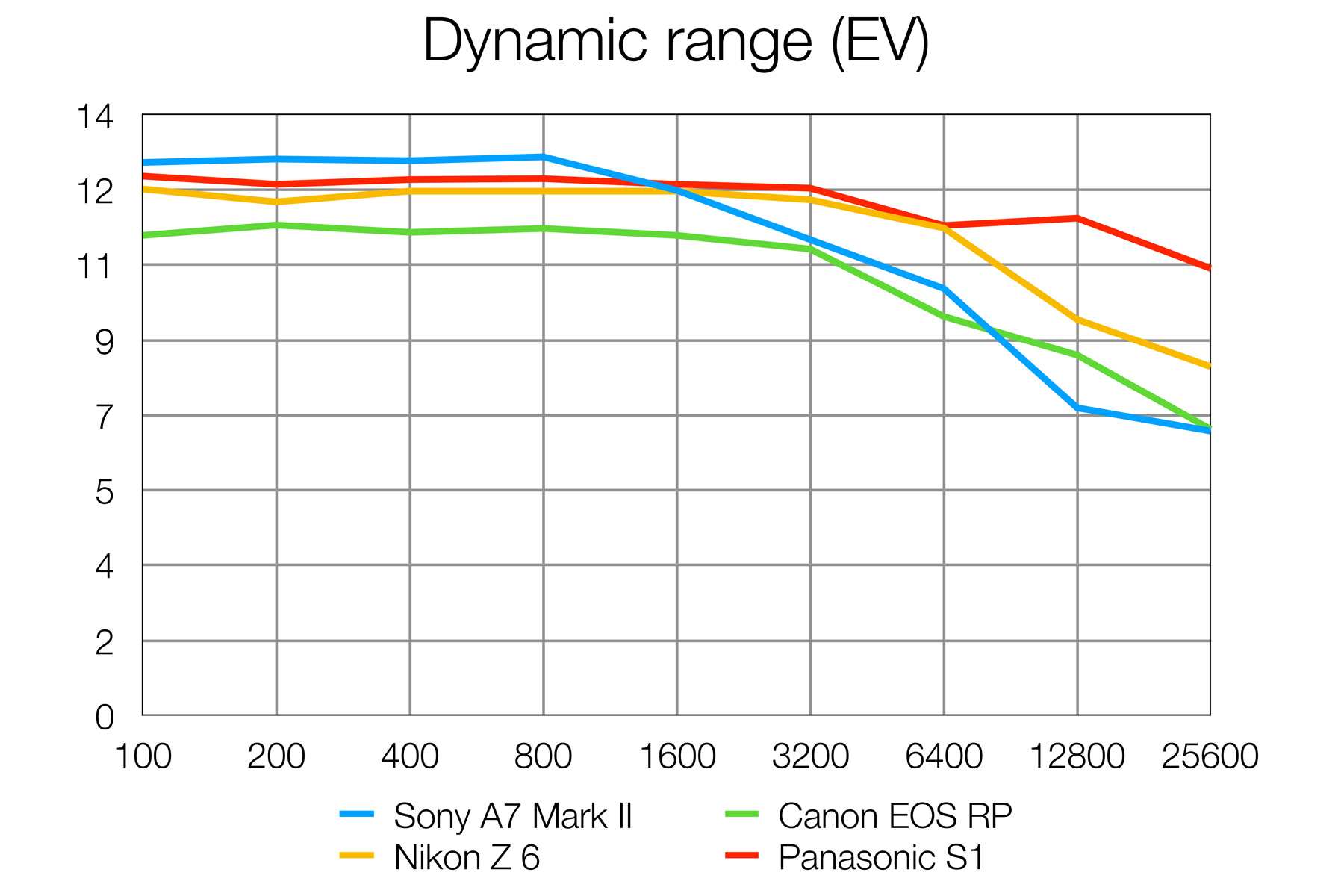
Dynamic range
Again, the Sony's performance belies its age, producing marginally better dynamic range than all its rivals up to ISO 800, though at higher ISO settings than this, the Nikon Z 6 and Panasonic Lumix S1 are noticeably better.
Verdict
Sony cameras have moved on a long way since the A7 Mark II was launched, with far superior autofocus systems, 10fps continuous shooting and 4K video. And yet for regular stills photography, the A7 Mark II still performs extremely well. It might struggle to compete with modern full frame mirrorless rivals in other respects, but at current prices it offers amazing value for money – and still has the performance to satisfy the majority of enthusiasts and hobbyists looking for an affordable route into full frame photography.
HOWEVER, if you can afford the extra, we'd recommend the Nikon Z 6 or Panasonic Lumix S1 as better alternatives. The Canon EOS RP is also good but harder to recommend because apart from its vari-angle screen, there are few respects in which it's any better than the Sony A7 Mark II, and it doesn't have the Sony's in-body stabilization.
Read more:
• The best mirrorless camera in 2019
• The best Sony cameras in 2019
• Sony A7R IV vs A7R III vs A7R II: pixels vs price, and how to choose the right model

Rod is an independent photography journalist and editor, and a long-standing Digital Camera World contributor, having previously worked as DCW's Group Reviews editor. Before that he has been technique editor on N-Photo, Head of Testing for the photography division and Camera Channel editor on TechRadar, as well as contributing to many other publications. He has been writing about photography technique, photo editing and digital cameras since they first appeared, and before that began his career writing about film photography. He has used and reviewed practically every interchangeable lens camera launched in the past 20 years, from entry-level DSLRs to medium format cameras, together with lenses, tripods, gimbals, light meters, camera bags and more. Rod has his own camera gear blog at fotovolo.com but also writes about photo-editing applications and techniques at lifeafterphotoshop.com
